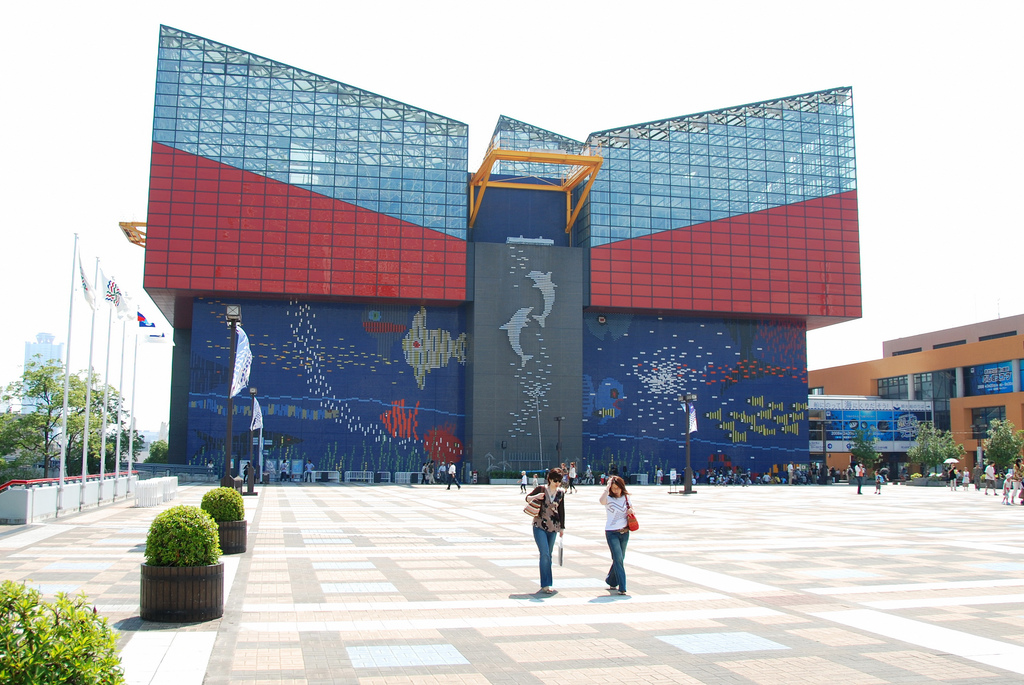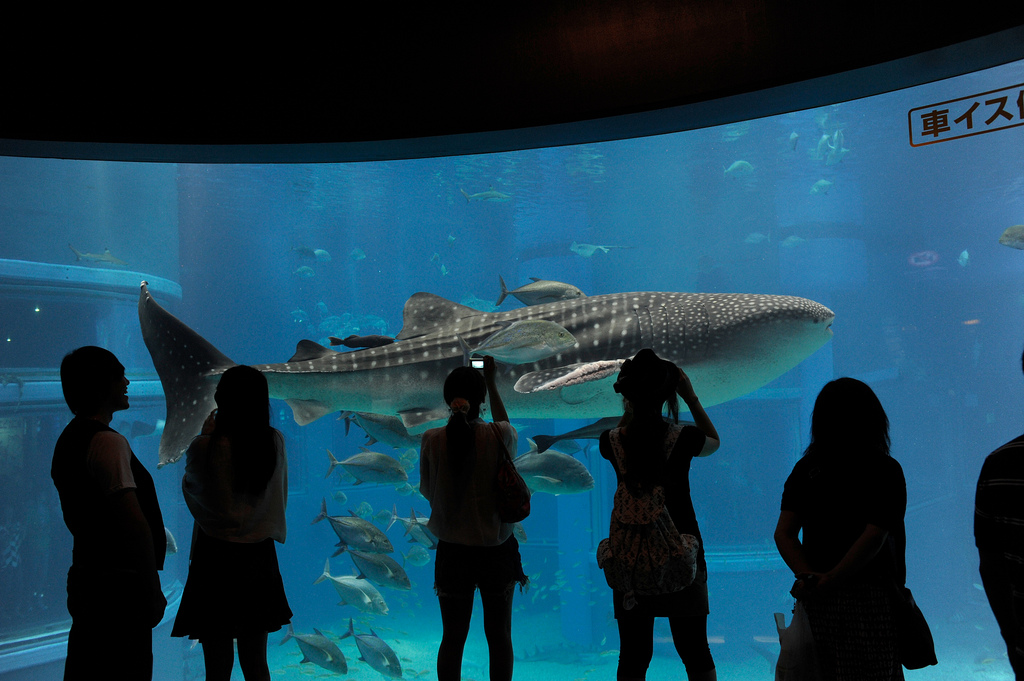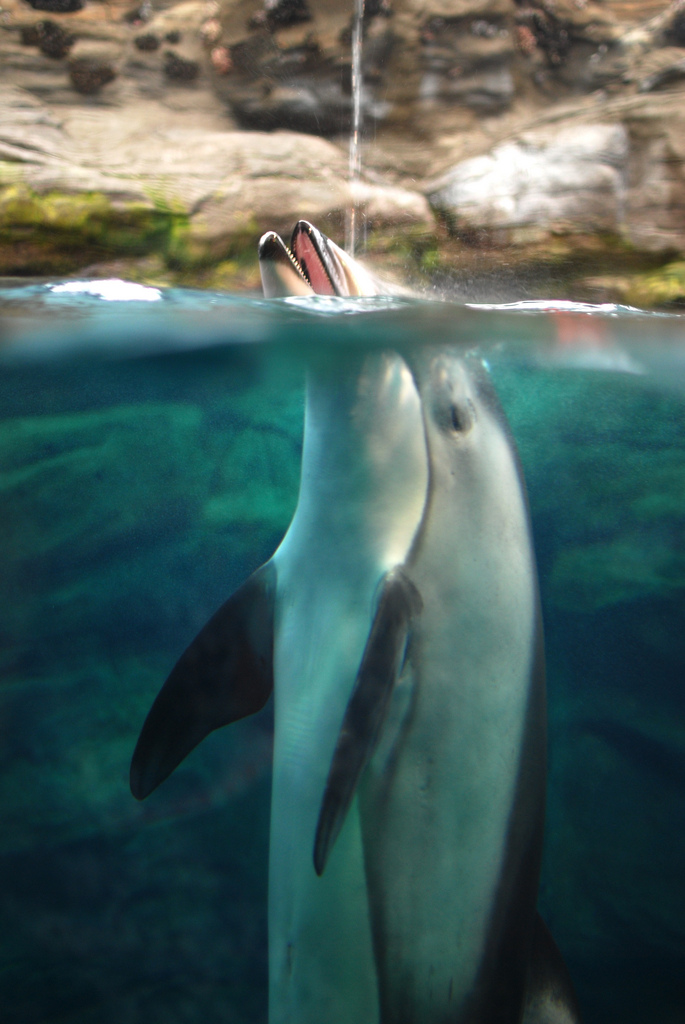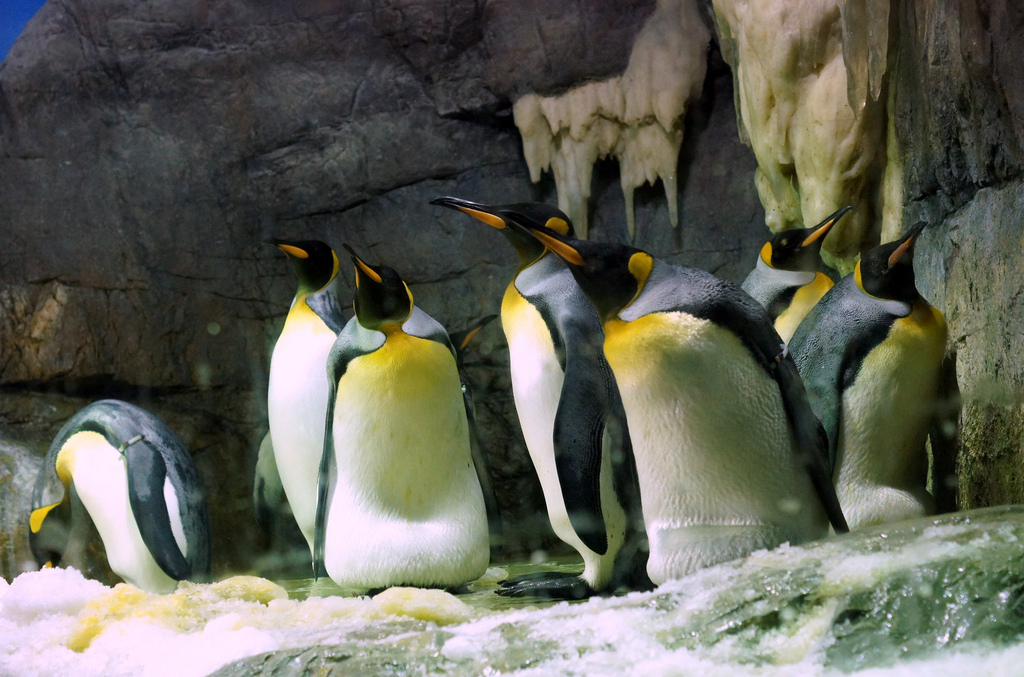
Osaka Aquarium Kaiyukan (海遊館 大阪)
Kaiyukan literally translates as “Ocean Play Place,” and that is a good description of one of the world’s largest aquariums. There are interesting and informative exhibits well-arranged for viewing enjoyment. The outside of the building is bright and colorful, with mosaic murals topped by a red roofline.

Osaka Aquarium Kaiyukan (海遊館 大阪)
The aquarium features habitats from the Ring of Fire area of the Pacific Ocean
The themes, displays and residents are as follows;
Tunnel Tank; Chromis Notata, Siganus Fucescens, rays and the like
Japanese Forests; Oriental small-clawed otter, Satsukimasu, Japanese Giant Salamander and the like
Aleutian Islands; Sea otters, Rainbow Trout, Sebastes inermis and the like
Monterrey Bay; the spotted seal and Californian sealions
Panama Bay; sloths and porcupinefish
Ecuadorian Jungle; Arapaima, Iguana, Squirrel Monkey and Capybaras
Antartica; different varieties of penguins
Tasmanian Sea; Pacific dolphins
Great Barrier Reef; Chromis Notata, butterflyfish and other species
The Pacific Ocean; This is largest tank in the aquarium the whale shark, Manta Ray, Bluefin Tuna and other large fish of like size
Seto Inland Sea; Fish native to Seto, Japan
The giant kelp forest; Sunfish squid and other species
Chilean Rocks; South American pilchard、Japanese anchovy and other species
Cook Strait; Sea Tortoises and other species
Japanese trench; Japanese spider crab, largehead hairtail, North pacific giant octopi, marbled rockfish and other species
Deep sea Zone; Giant Isopods, Japanese lobsters, trumpetfish and other species
Jellyfish Area; Different varieties of Jellyfish
Enter and start at the top in the Japanese forest exhibit, working downward through various tanks to the deep-sea exhibits at the bottom. The main tank at the center is 9 meters (30 feet) deep, home to manta rays and a whale shark.

Osaka Aquarium Kaiyukan (海遊館 大阪)
The Kaiyukan is open from 10 am to 8 pm, but closing times may be later in peak seasons. The entrance fees are ¥2300 for adults, ¥1200 for children 7-15 years old, and ¥600 for children 4-6 years. The entire facility is wheelchair and stroller accessible. Bathrooms have changing tables and there is a nursing room on the second floor.

Osaka Aquarium Kaiyukan (海遊館 大阪)
For ¥500 there are audio guides explaining many of the major points of the exhibits. These guides come in four languages including English. There is a gift shop with many unique items that make excellent souvenirs. The Kaiyukan can be reached from the Osakako Station of the Osaka Municipal Subway Chuo Line.
http://www.kaiyukan.com/language/eng/index.htm